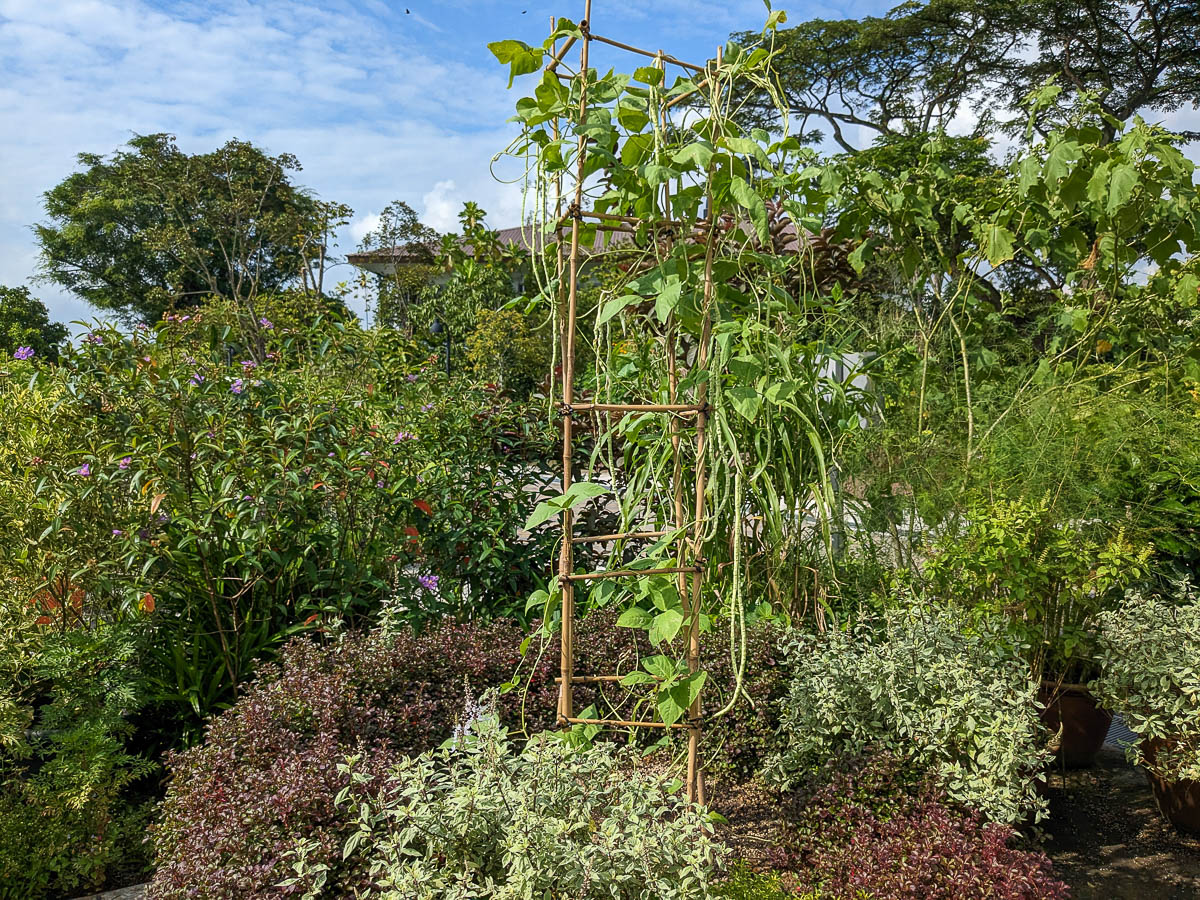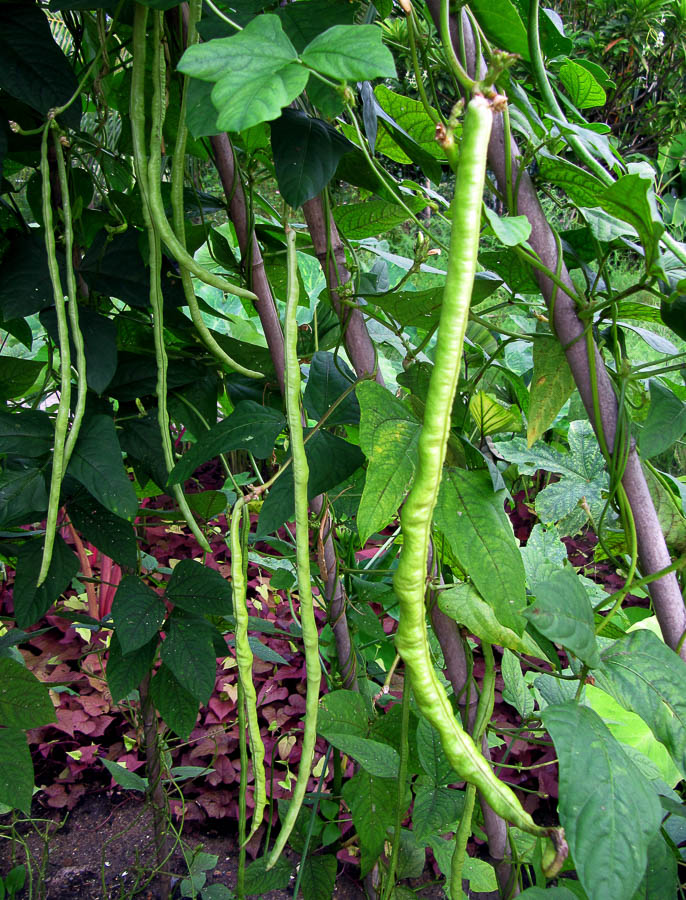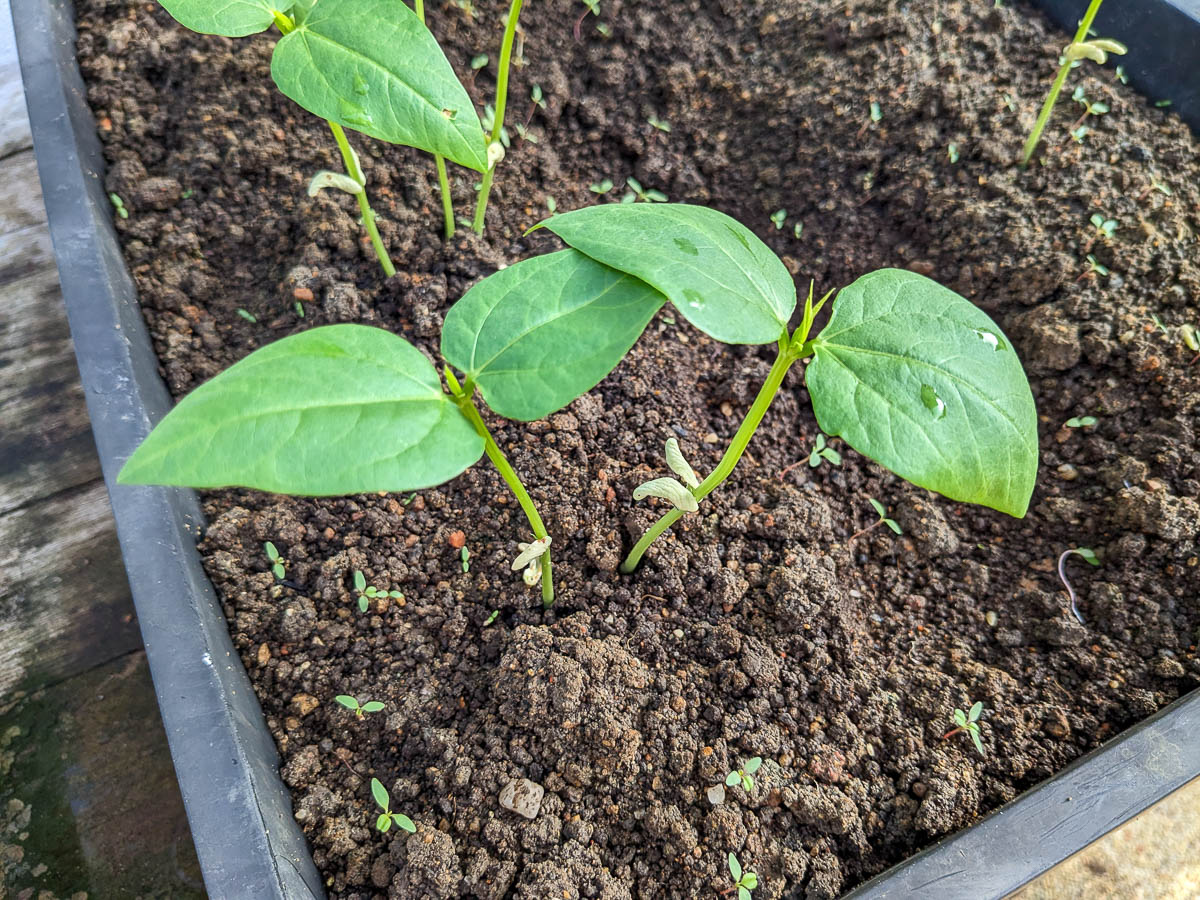Long Bean
Long Bean (Vigna unguiculata)
Other common names: Yard-long Bean, Snake Bean

Long beans are a hardy and productive crop suitable for new gardeners who want to grow a fruiting climber. Immature long beans can be eaten raw, stir-fried or steamed.
An annual crop, these plants are often grown as part of crop rotation with other fruiting climbers.
This plant is part of the Fabaceae or Bean family, which includes other popular edible fruits like Winged Bean, Peanut, and Butterfly Pea. All members of the bean family can be used for companion planting as they can fix nitrogen into the soil.
Sun and soil needs:
This vine does best in full sun gardens with a minimum of 6 hours of direct sunlight. It can also grow in 4-6hours of direct sunlight or more than 6 hours of indirect sunlight, but the plant may be less lush and produce less fruits.
Plants do best in pots with loamy soil at least 30cm deep, or in true ground.
Sowing seeds:
Seeds can be sown directly into pots or the ground around 15-30cm apart. Lightly water the soil until damp, once a day. Seeds should sprout within 2 weeks.
The seedlings are generally resilient to most environmental factors but may be vulnerable to being eaten by snails or birds. Protect your young plants with a DIY cloche or netting.
Growing:
Bean plants generally don’t require much fertilising because they are able to fix their own nitrogen. However, they do benefit from being fed high potassium and phosphorus fertilisers once a month after their first flower to encourage flowering and thus fruiting.
Because the vines will grow on top of each other, it is a good practice to prune regularly and remove dead leaves and vines to improve ventilation and allow light to reach more of the plant.
This vine is vulnerable to heat stress during the dry season. Water it regularly and mulch the base to prevent water loss.
As a fast-growing vine, this plant can be grown on the ground or trained up a sturdy trellis. The fruits are quite long and often exceed 30cm, so they do best on tall trellises.
Harvesting:

Plants can be harvested for fruits around 2 months after sowing. The best time to harvest the fruit is in the early morning, before 9am.
Only green, immature beans can be eaten. Dry, brown pods are mature, and can be used for seeds.
Harvest cycle:
| Growing period | Sowing to germination | Germination to transplanting | Transplanting to first harvest | Total sowing to first harvest |
|---|---|---|---|---|
| Approximate time | Less than 2 weeks | 1 to 2 weeks | 1 to 2 months | 2 to 3 months |
Check out our sowing and harvest planner to schedule your growing!
Propagation:

This vine can be grown via seeds.
Common problems & solutions:
Young plants have soft stems and can be completely eaten by slugs and snails. Grow seedlings till they are at least 10cm tall before planting them in true ground, or use DIY cloches or netting to protect young plants.
If your plant has few to no flowers, you can fertilise the plant with fertilisers high in phosphorus and potassium. These nutrients encourage root and flower growth, which are important for the plant to produce more fruit.
Aphids, Mealy Bugs, Whiteflies, and Spider Mites often infest the plant if it has underlying problems like repeated wilting from heat stress. Mechanical pest control methods like pruning the infested parts are the best methods for managing these pests in the short term, but resolving the underlying problem will prevent them in the long term.
Wilting leaves during hot weather is a sign of heat stress. Increase the number of times the plant is watered daily, and apply mulch at the base to prevent water loss.
Squirrels and birds may eat unripe or ripe fruit. Wrap your fruit in netting when it starts to develop from a fertilised flower, ideally after all the petals have dropped off.

